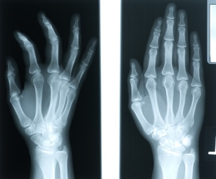Slowing the Process of Bone Loss
go.ncsu.edu/readext?603801
en Español / em Português
El inglés es el idioma de control de esta página. En la medida en que haya algún conflicto entre la traducción al inglés y la traducción, el inglés prevalece.
Al hacer clic en el enlace de traducción se activa un servicio de traducción gratuito para convertir la página al español. Al igual que con cualquier traducción por Internet, la conversión no es sensible al contexto y puede que no traduzca el texto en su significado original. NC State Extension no garantiza la exactitud del texto traducido. Por favor, tenga en cuenta que algunas aplicaciones y/o servicios pueden no funcionar como se espera cuando se traducen.
Português
Inglês é o idioma de controle desta página. Na medida que haja algum conflito entre o texto original em Inglês e a tradução, o Inglês prevalece.
Ao clicar no link de tradução, um serviço gratuito de tradução será ativado para converter a página para o Português. Como em qualquer tradução pela internet, a conversão não é sensivel ao contexto e pode não ocorrer a tradução para o significado orginal. O serviço de Extensão da Carolina do Norte (NC State Extension) não garante a exatidão do texto traduzido. Por favor, observe que algumas funções ou serviços podem não funcionar como esperado após a tradução.
English
English is the controlling language of this page. To the extent there is any conflict between the English text and the translation, English controls.
Clicking on the translation link activates a free translation service to convert the page to Spanish. As with any Internet translation, the conversion is not context-sensitive and may not translate the text to its original meaning. NC State Extension does not guarantee the accuracy of the translated text. Please note that some applications and/or services may not function as expected when translated.
Collapse ▲
May is Osteoporosis Awareness Month. During this month of awareness, taking a look at your family’s history could be the first step in awareness and slowing the process of bone loss. Our genetic makeup plays an important role in determining whether we are at risk of developing osteoporosis. It’s also important to know that our lifestyle plays a vital role also. Diet and physical activity influence our bone growth and development during our younger years, as well as the rate of bone loss during our later years in life.
Bone thinning is a natural process after our mid-20’s. The thicker our bones the less likely they are to become thin enough to break. Women, in particular, should develop a lifestyle during the younger years, that includes nutritious calcium-rich foods and bone strengthening exercises to improve the quality of their bones now, for later in life.
Green leafy vegetables, salmon and sardines with bones, almonds, and dairy products are some foods that aid in developing strong bones. EFNEP’s Chicken and Broccoli Quiche is a great recipe that includes foods that fight osteoporosis.
Chicken and Broccoli Quiche Courtesy of “Cooking with EFNEP”
Makes 2 quiches.
6 servings per quiche.
Serving size: 1/6 quiche
Ingredients:
2 9-inch ready made pie crusts, baked
4 eggs
1 cup low-fat or skim milk
salt and pepper to taste
1/2 – 3/4 teaspoon garlic powder
1 package (10 ounces) frozen, chopped broccoli
1/4 cup shredded carrots
1/4 cup chopped onion (optional)
3/4 cup cooked, chopped chicken
3/4 cup shredded cheese
Directions:
- Preheat oven to 350 degrees Fahrenheit. Bake pie crusts according to package directions
- In a mixing bowl, combine eggs, milk, salt, pepper, and garlic powder. Mix well.
- Place frozen chopped broccoli in the microwave, cook according to package directions. Pour off the liquid. Let cool, squeeze broccoli to remove more water. Mix broccoli with carrots and onions.
- Layer the meat, vegetables, and cheese into bake pie crusts. Pour egg mixture over the ingredients.
- Bake at 350 degrees for 30-40 minutes or until the top is browned and a knife inserted in the center comes out clean.
- Let stand 5 minutes before cutting.




